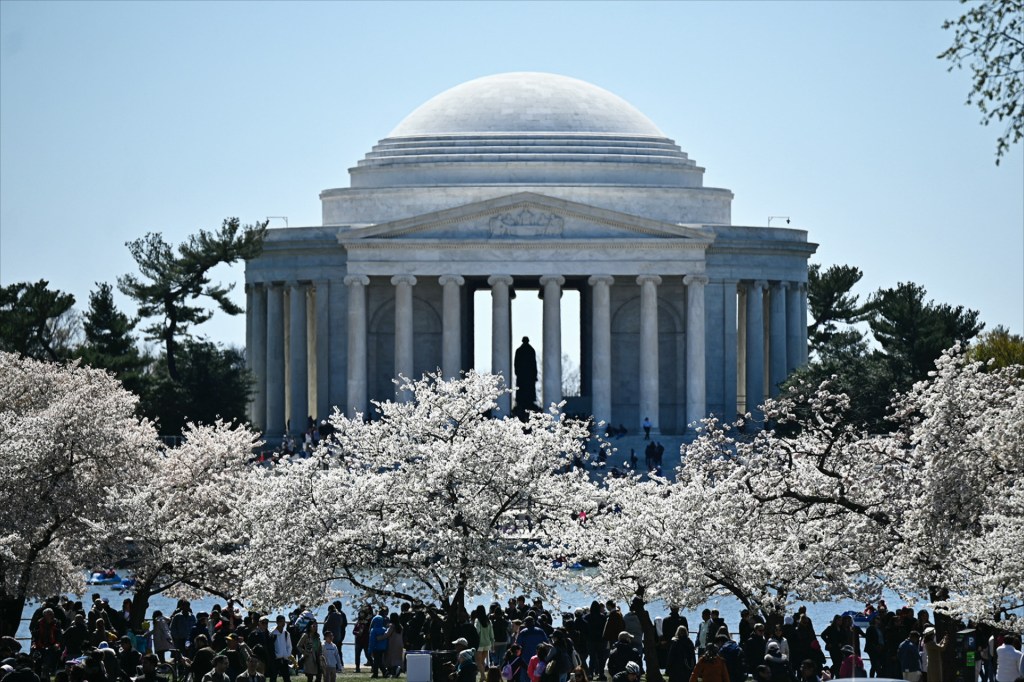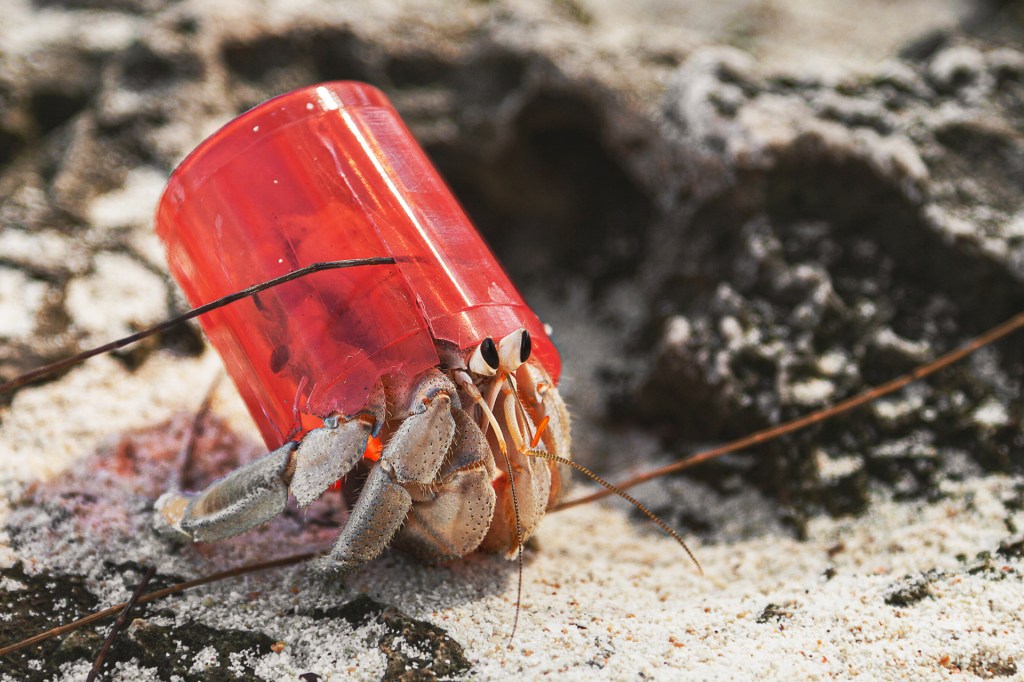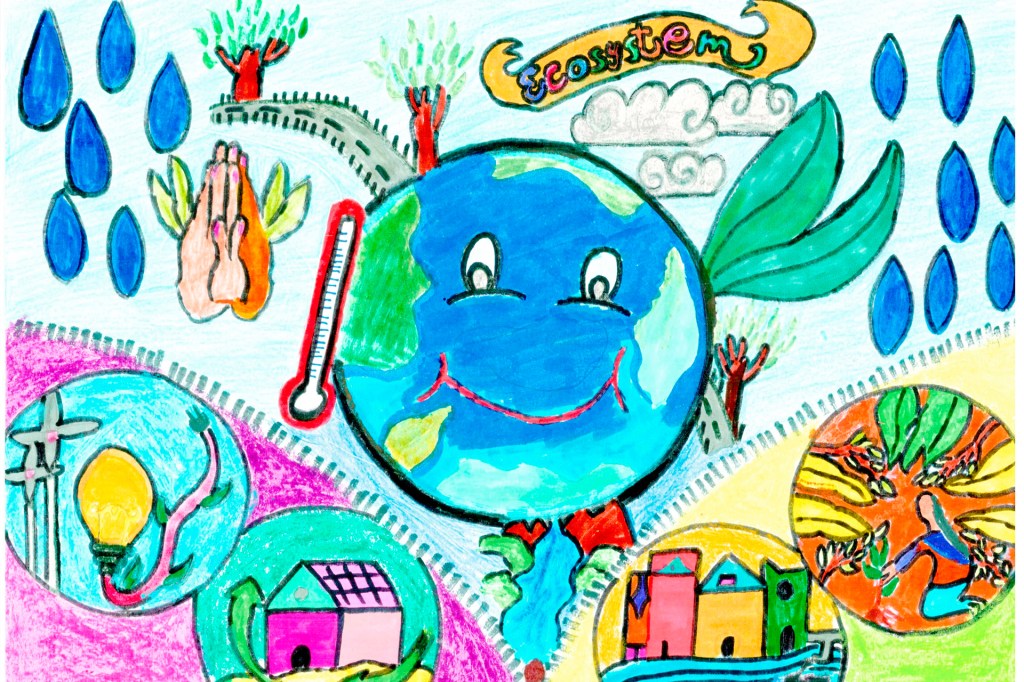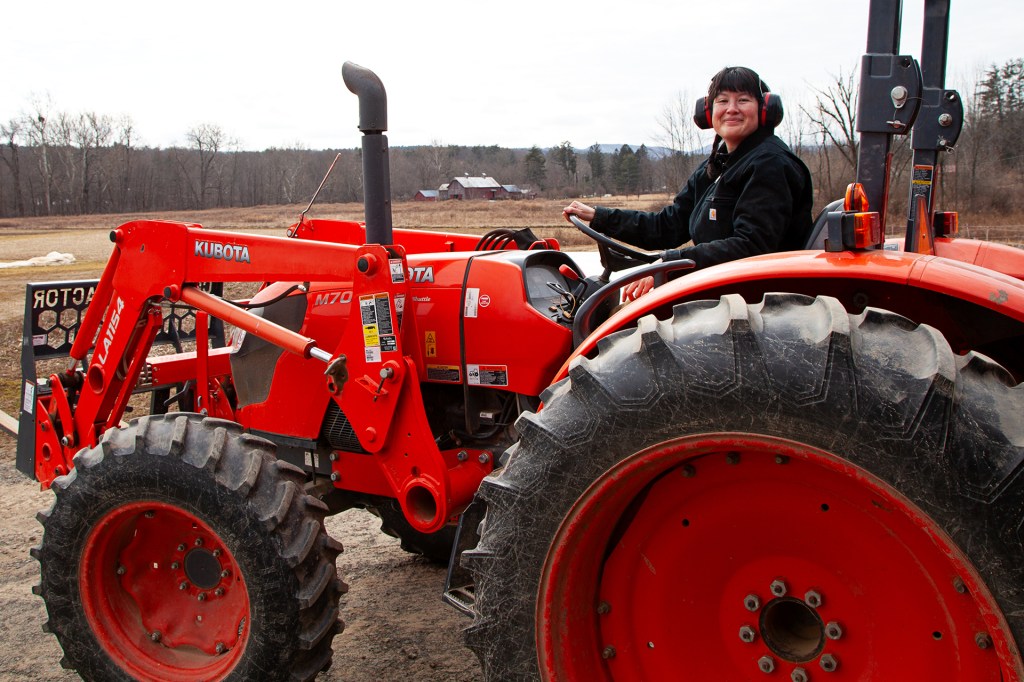Safe Haven

In the middle of the night, a baby chimpanzee is having nightmares. Chantal, his caretaker, tries to soothe him back to sleep. They’re at the Tchimpounga Chimpanzee Rehabilitation Center. It’s in the Republic of the Congo, in Africa.
The chimp’s name is George. He was taken from his mother by poachers poacher a person who kills or captures wild animals illegally (noun) Poachers pose a danger to endangered species. . Eventually, he was rescued and taken to the sanctuary. Chantal helped him make friends with the other chimpanzees.
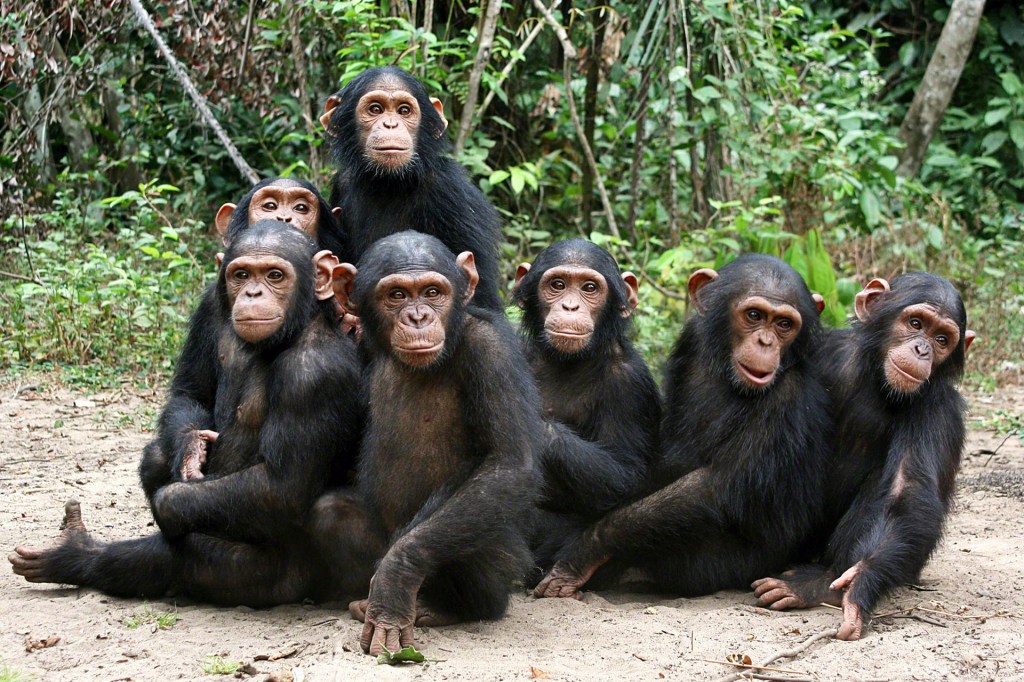
SAY “CHEESE” Chimpanzees at the Tchimpounga sanctuary sit for a group shot.
FERNANDO TURMO—JGIThe sanctuary is part of the Jane Goodall Institute (JGI). “We rescue chimps from horrible conditions and socialize them,” Goodall told TIME for Kids. “They need to learn chimp behavior. If one loses its mother when it’s tiny, it’s like a human child losing its mother.”
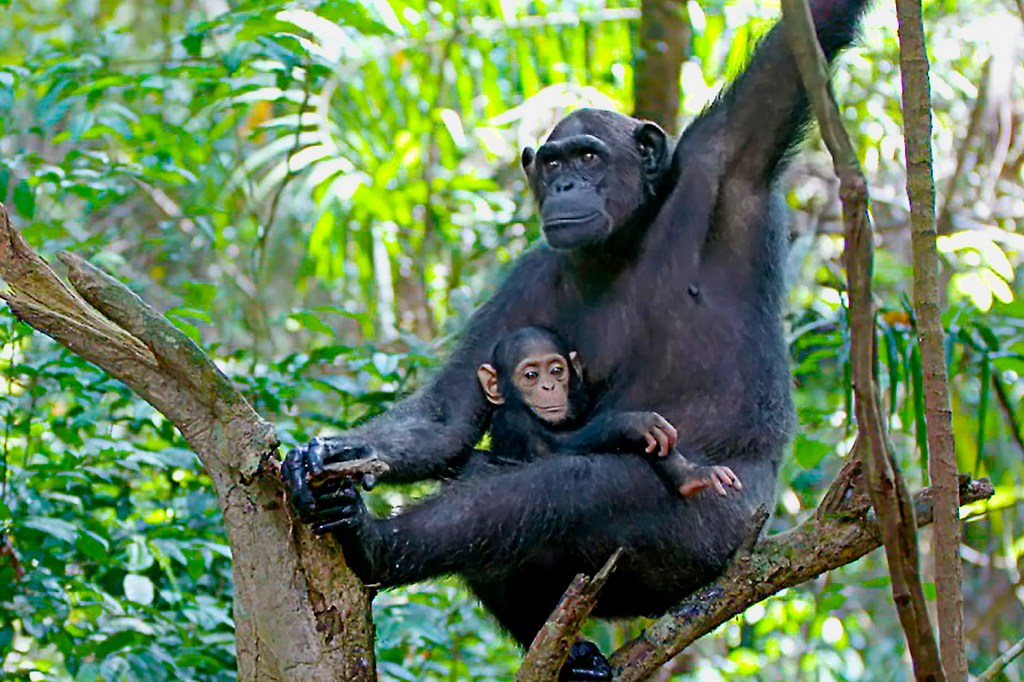
ABOVE IT ALL Chimps take in the view from a tree in the near-wild environment of the sanctuary.
FERNANDO TURMO—JGIChimpanzees are victims of deforestation and the illegal wildlife trade. Their population once numbered in the millions. Now it could be down to 172,000. This makes the work of the Tchimpounga sanctuary even more important.
“An ecosystem is made up of a complex mix of plants and animals,” Goodall says. “As you begin to lose them, the ecosystem gets weaker and weaker. It may then collapse.”
Getting Results
Tchimpounga is home to around 150 chimps. Many of them live on forested islands. (See “Island Home.”) There, they are prepared for a possible return to the wild.
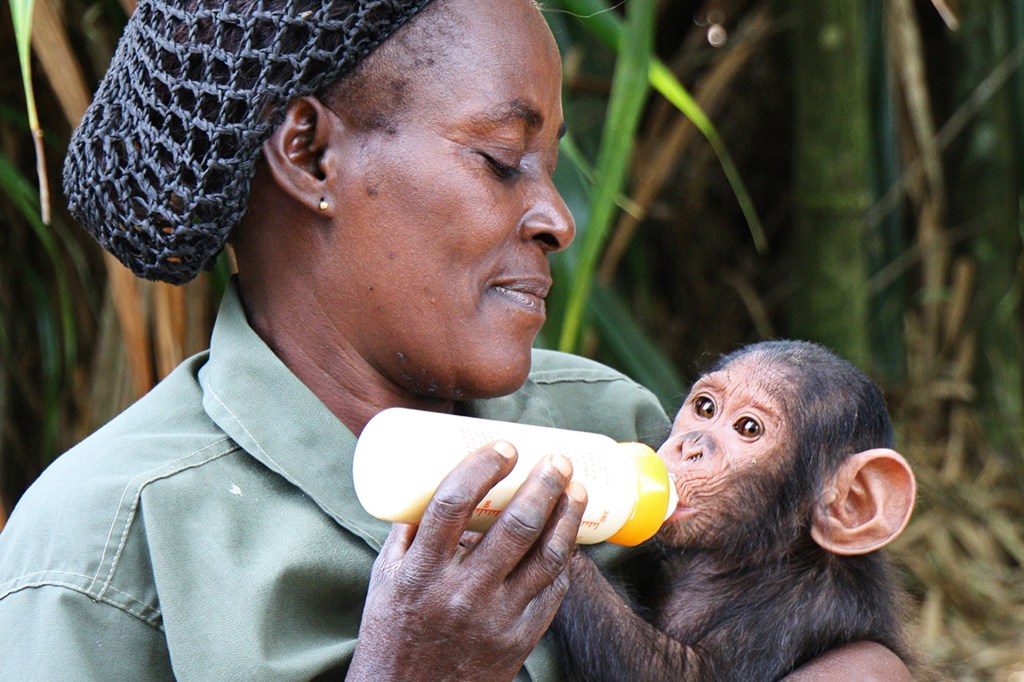
BACK TO HEALTH Caregiver Antonette nurses an orphaned chimpanzee named JeJe.*
FERNANDO TURMO—JGIThe chimps aren’t the only ones getting an education. The sanctuary airs documentaries on local television. And it works with law enforcement and government in the Republic of the Congo to reduce illegal trade in animals.
“We’ve received only one orphan chimp over the past three years,” Rebeca Atencia said in a recent interview. She’s the sanctuary’s head veterinarian. “This is a great achievement that shows us that our efforts are working.”

MEDICAL CARE Rebeca Atencia examines a chimpanzee at the Tchimpounga Sanctuary, in the Republic of the Congo.
FERNANDO TURMO—JGISaving Lives
Atencia also works with people who live near the sanctuary. They rely on the forest for food and building materials. Their growing population is a danger to chimps. JGI helps these communities get healthcare, clean water, and fuel. This makes them less dependent on the area’s natural resources. “When [JGI is] there to help, it’s beneficial for everybody,” Goodall says.
The chimps of Tchimpounga would probably agree. They’ve shown that they’re aware of the sanctuary staff’s efforts. “Saving the life of a chimpanzee is very gratifying gratifying satisfying (adjective) It was gratifying to get an A on the math test. ,” Atencia says. “Chimpanzees know when you’ve helped them or saved their life. Sometimes, they thank you with a hug.”
Island Home
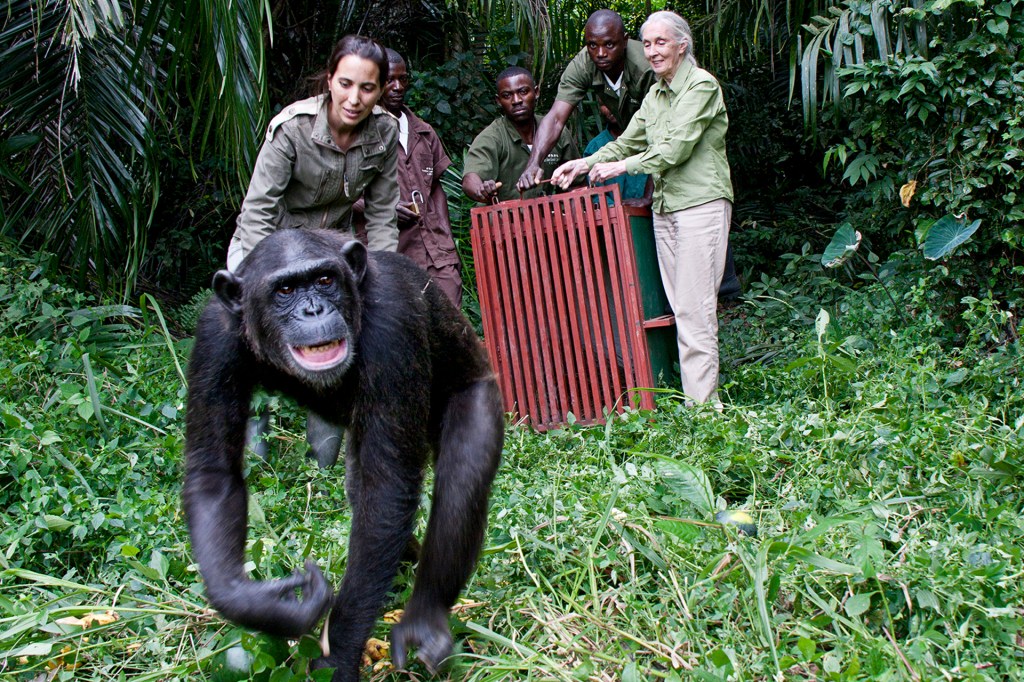
In this photo, Atencia (left) and Goodall are helping to release Wounda, a female chimp, in 2013. Chimpanzees at the Tchimpounga sanctuary are taught how to live in the wild. Then they can be released. Islands in the Kouilou River provide a near-wild forest within the sanctuary. The chimps can live there. They can be safe from wild chimpanzees, poachers, and disease. And they’re still under the care of sanctuary staff.
* This photo represents a sanctuary context with trained professionals. JGI does not endorse handling or close proximity to wildlife.




